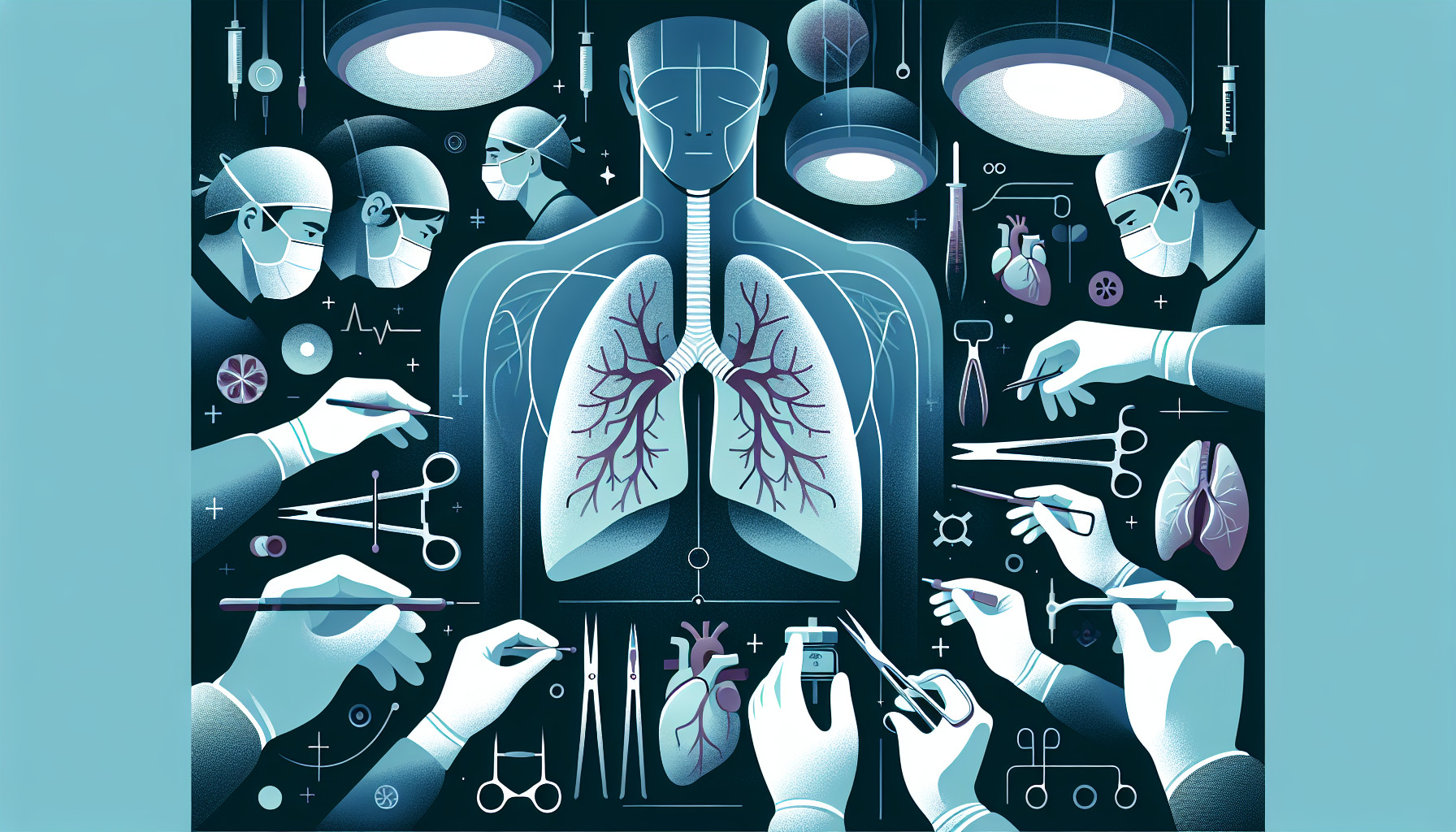Our Summary
This research paper discusses the common infections that lung transplant patients can get. These infections, known as opportunistic infections, are a major cause of health problems and death for these patients. The risk of infection is higher for lung transplant recipients because the new lung is constantly exposed to the outside environment, the patient’s immune system is weakened, and the body’s natural defenses like the ability to clear mucus and cough are impaired. The risk is even higher for patients who have only had one lung transplanted, as the original lung’s microbes can impact the new lung.
To reduce the risk of infection, doctors thoroughly screen both the patient and the organ donor before the transplant, use preventative antibiotics, and keep a close eye on the patient after the transplant. The paper talks about the most common types of infections - viral, fungal, and mycobacterial (a type of bacteria) - and gives advice on how to prevent and treat them.
FAQs
- What are the major risk factors for infections after a lung transplant?
- What are some strategies to mitigate the risk of infection after a lung transplant?
- What are common types of infections that occur after a lung transplant and how can they be prevented or treated?
Doctor’s Tip
A helpful tip a doctor might tell a patient about lung transplant is to strictly adhere to the prescribed medication regimen, especially immunosuppressants, to prevent rejection of the transplanted lung. Additionally, it is important to practice good hygiene, avoid crowds and sick individuals, and follow up regularly with your healthcare team for screenings and monitoring of any potential infections. It is also crucial to communicate any symptoms of infection, such as fever, cough, or shortness of breath, to your healthcare provider promptly.
Suitable For
Patients who are typically recommended for lung transplant are those with end-stage lung disease who have exhausted all other treatment options and have a significantly reduced quality of life. Common indications for lung transplant include cystic fibrosis, chronic obstructive pulmonary disease (COPD), idiopathic pulmonary fibrosis, pulmonary hypertension, and bronchiectasis. Patients must also meet specific criteria set by transplant centers, including being physically and mentally able to undergo the transplant surgery and adhere to the post-transplant medication regimen.
It is important for patients undergoing lung transplant to be aware of the risk of opportunistic infections post-transplant, as immunosuppression is necessary to prevent rejection of the donor lung. These infections can be caused by viruses, fungi, and mycobacteria, and can lead to significant morbidity and mortality if not properly managed.
Patients who have received a lung transplant should work closely with their healthcare providers to develop a comprehensive plan for infection prevention, including pretransplant screening, antimicrobial prophylaxis strategies, and routine surveillance post-transplant. It is important for patients to be vigilant about any signs of infection, such as fever, cough, or shortness of breath, and seek prompt medical attention if they develop symptoms.
Overall, lung transplant can be a life-saving procedure for patients with end-stage lung disease, but it is important for patients to understand the potential risks and complications, including opportunistic infections, and work closely with their healthcare team to minimize these risks and optimize their long-term outcome.
Timeline
Before lung transplant:
- Patient is evaluated by a transplant team to assess eligibility for transplant
- Patient undergoes extensive testing and evaluation to determine if they are a suitable candidate for transplant
- Patient is placed on a waiting list for a donor organ
- Patient may experience worsening respiratory symptoms and require supplemental oxygen or other medical interventions
- Patient may experience anxiety and uncertainty about the transplant process
After lung transplant:
- Patient undergoes surgery to receive the new lung(s)
- Patient is closely monitored in the intensive care unit for complications
- Patient is started on immunosuppressive medications to prevent rejection of the new lung(s)
- Patient undergoes rehabilitation to regain strength and lung function
- Patient is closely monitored for signs of infection, rejection, and other complications
- Patient may experience improvements in respiratory symptoms and quality of life
- Patient must adhere to a strict medication regimen and follow-up care plan to maintain the health of the new lung(s)
What to Ask Your Doctor
- What are the potential risks and complications of a lung transplant, including opportunistic infections?
- How will my immune system be affected by the immunosuppressant medications I will need to take after the transplant?
- What steps will be taken to prevent infections before, during, and after the transplant surgery?
- How will my risk for infections be monitored and managed post-transplant?
- What symptoms should I watch for that could indicate a potential infection, and when should I contact my healthcare provider?
- Will I need to receive any specific vaccinations before or after the transplant to prevent infections?
- How will my existing lung health and any previous lung infections impact my risk for post-transplant infections?
- What is the protocol for treating common viral, fungal, and bacterial infections after a lung transplant?
- Are there any lifestyle changes I should consider to reduce my risk for infections after the transplant?
- How will my transplant team work with infectious disease specialists to ensure my overall health and well-being after the surgery?
Reference
Authors: Magda G. Journal: Clin Chest Med. 2023 Mar;44(1):159-177. doi: 10.1016/j.ccm.2022.10.012. PMID: 36774162
